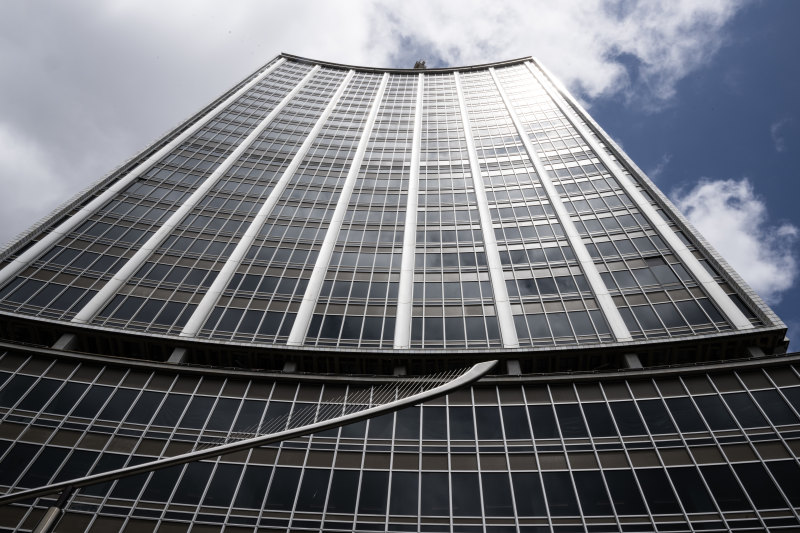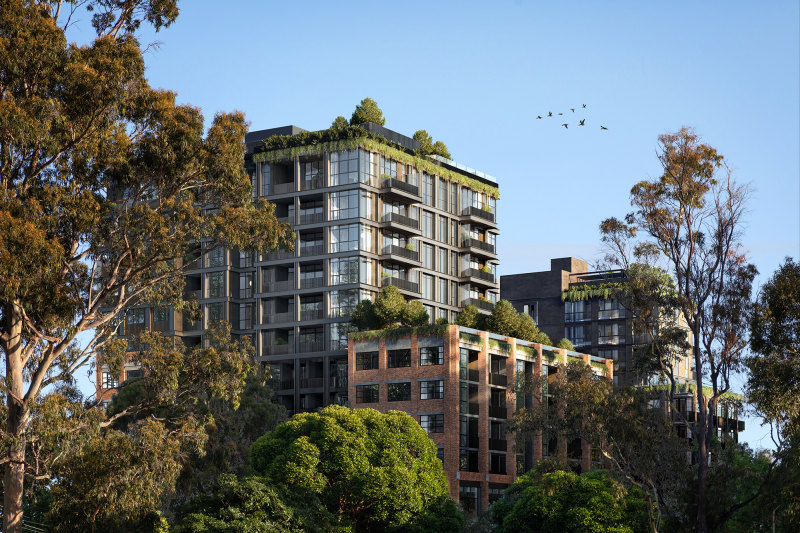Hitting the right note: Adapting the backyard studio for a score of needs
Most home-based workers – and according to the Australian Bureau of Statistics there are 1.3 million of you – want the children out from underfoot during business hours. Best if they’re out of the house altogether.
Perversely, Ray Cheung took his two pre-teeners with him when he designed and had built a small backyard studio for Krisna Cheung Architects behind his North Melbourne home.
In fact, he specified what would be a nightmare situation to most parents – whether working from home or not.
He put a play space for them on a perforated metal floor directly above his desk. “They can ask me questions through the floor. And my son is often up there practising his guitar, which is quite nice”.
Musician and music teacher Dr David Banney had been conducting lessons in the third bedroom of his Newcastle home. But having a nice backyard, and an architect younger brother, Michael, of the Brisbane-based M3architecture practise, he asked for a separate building that could replace a gabled fibro shed and cater to multiple functions.
These were as a teaching studio, “a quasi performance space that is ‘backyard’ enough to allow learning and mistakes”; as a room in which a composer can hear the score in his head and — “when the undersized grand piano is spun out of the way and the couch turns into a sofa-bed — as a guest room”.
Making the gorgeous little fibro-clad music studio into detached extra accommodation is further facilitated by a little bathroom discretely behind the bookshelf wall.
The home workplace that has evolved into the backyard studio or office space is an idea that has been around for a while now, since a casualising workforce found they could feasibly work from home while saving on the commute time and costs, and the staggering price of childcare.
But as these two examples show, the variations on this theme are becoming ever more nuanced.
For Ray Cheung, who partners in life and practise with his architect wife Elisabet, the decision to make a 50 square metre “Cubby Office” three metres from the backdoor was cheaper than building an upstairs extension. Centrally placed in the yard, it extended on an existing carport and also added simple bathroom and kitchen facilities on the other side.
“The combined office/playroom” was a lot about “wanting to spend as much time as possible with the kids. And they want to spend time with us”, he says.
With a white polycarbonate-clad frontage that addresses the small courtyard and melds in a modern way with the white-painted Victorian brick villa, the studio with mezzanine has a deliberate light, ventilation and noise permeability between floors and through walls.
“The upstairs space where the kids play, doubles as a client and co-worker chill-out space. We have brainstorming sessions up there while sitting on cushions.”
The Banney Bros brilliant amenity, shaped for the best possible acoustic outcome (high and suspended wooden floor, forward sloping ceiling and walls that can be curtained to contain reverberation), “is like an instrument in itself. It has a beautiful resonance”.
It also pays small homage to Alvar Aalto’s world-famous Finladia Hall.
“White is a very unusual colour for a performance venue,” says Banney, the architect. Not incidentally, he says, a piece of white marble from the Helsinki venue has been built into the corner of the desking which in turn was built by David.
With its gable proscenium arch and the 1×3-metre front “stage” the Newcastle music box had a character designed to have a subtle but telling effect.
“It’s a hybrid between a performance venue” for occasional in-house student performances, “and as a light-filled backyard shed that isn’t too daunting for children to enter”.
“Just like backyard cricket, the spatial outcome means that people (students and rehearsing professional musicians) can drift in and out of performance and learning mode,” he says.
“The pedagogy of the Australian backyard is about making mistakes but also about having international aspiration”.
In their childhood backyard cricket matches the brothers Banney used to dream of playing for Australia “and of being Don Bradman”. So they well know the important function the Australian backyard can play.
We recommend
States
Capital Cities
Capital Cities - Rentals
Popular Areas
Allhomes
More







